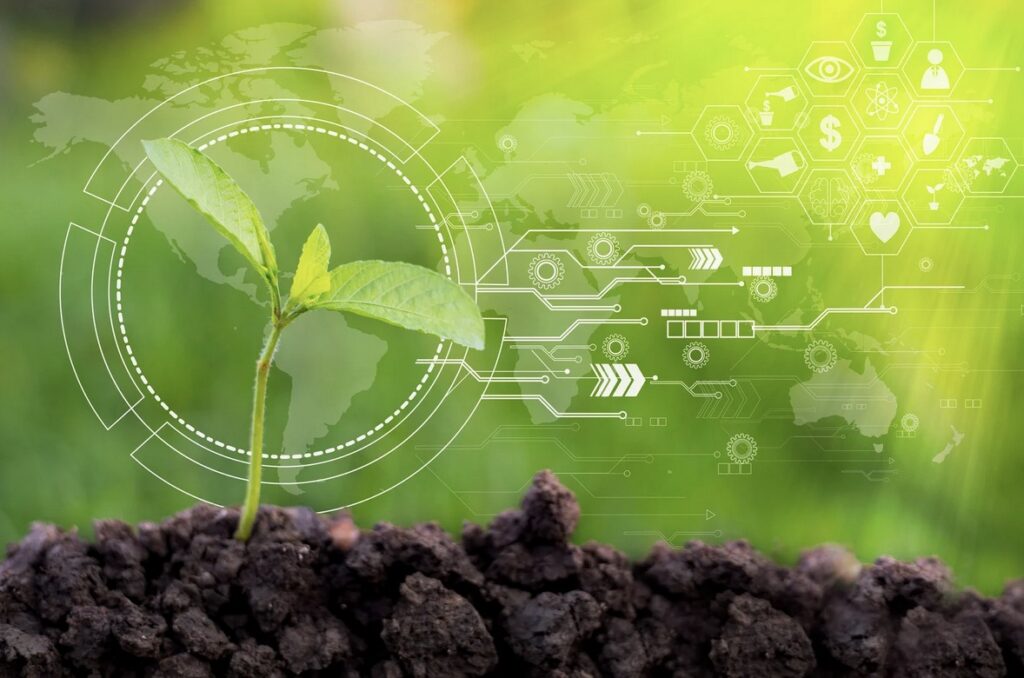Green Technology Solutions
Green technology solutions represent a spectrum of strategies and tools critical for environmental conservation. These solutions, often referred to as clean technology, emphasize sustainable resource utilization, reduced emissions, and an overall lesser impact on the environment.
Definition and Overview

Green tech solutions, concise yet encompassing, describe processes, practices, and tools emphasizing environmental sustainability. These solutions encompass a wide variety of technologies, such as renewable energy, electric vehicles, and energy-efficient appliances that work to conserve resources, promote renewables, and mitigate pollution.
The scope isn’t confined to energy. Green technology embraces sectors like recycling, air and water purification, sewage treatment, as well as eco-friendly construction and agriculture.
Around its core rotate renewables like wind, solar, and hydro power, as well as clean transport solutions, organic farming methods, and identifying alternative eco-friendly materials in architecture.
Benefits of Green Technology
Green technology bestows a multitude of benefits – environmental, economic, social, and even political. At its epicenter, it brings environmental benefits that ripple out across its other domains.
Firstly, green technology reduces pollution. Powering homes using solar panels or windmills, for example, curtails carbon emissions, helping mitigate climate change. Secondly, it promotes resource conservation. Electric vehicles, using efficiently rechargeable batteries instead of non-renewable petrol or diesel, exemplify this aspect.

Meanwhile, from an economic perspective, it spurs job creation while decreasing operational cost. Solar and wind energy installations, come with added needs for maintenance and monitoring, fostering job opportunities.
Equally, a green manufacturing method often means less expenditure on raw materials, leading to a smaller production cost.
In the social domain, it empowers communities. With solar microgrids, even a remote village can become energy-self-sufficient. Politically, green technology invites collaborative global efforts towards an eco-friendly future.
Key Areas of Green Technology Solutions
In this part, three primary aspects will be explicated, including renewable energy sources, green building techniques, and waste management innovations. The chief intent is detailing how these components contribute to eco-friendly practices and enhance the overall efficiency of green technology solutions.
Renewable Energy Sources
Renewable energy sources are a cornerstone in the realm of green technology. They function as continual, sustainable solutions, offering boundless power without the emissions that traditional fossil fuels produce. Solar, wind, hydro, geothermal, and bio-energy are examples of these sources. For instance, solar panels capture the sun’s power and convert it into electricity, while wind turbines harness the wind’s force to generate power.
Green Building Techniques
Another critical element resides in eco-friendly construction or green building techniques. By focusing on minimizing environmental impact and maximizing efficiency, these practices strive towards sustainable development. Utilizing materials like bamboo, reclaimed wood, and recycled steel are examples. Furthermore, embedding energy-efficient solutions such as solar panels and rainwater collecting systems can significantly advance a building’s eco-friendly metrics.
Waste Management Innovations
Waste management innovations are also relevant parts of green technology solutions.

These advancements have revolutionized the way societies handle waste, introducing sustainable strategies to reduce, reuse, and recycle waste materials. For example, technologies like composting and anaerobic digestion work by accelerating the decomposition of organic waste, converting it into nutrient-rich compost or bio-gas, respectively.
Such methods help reduce waste volume, diminish greenhouse gas emissions, and, in some cases, create valuable by-products, establishing a sustainable cycle.
Innovations on the Horizon
Game-changing inventions in green technology hold the promise of disrupting the status quo and accelerating sustainable living. For instance, IoT-based smart grids essay a major role in enhancing energy efficiency. Surprisingly, these grids offer real-time control of electricity consumption, circumventing unnecessary wastage.
Cumulatively, nanotechnology represents another giant leap forward. Applied in solar panels, it betters energy conversion rates, challenging existing limitations. Beyond energy production, green nanotechnology has robust implications for waste management. Scientists foresee molecular recycling—breaking down waste materials at an atomic level—for complete reuse.
Bio-based materials also offer tantalizing prospects. Take algae biofuel, it’s a promising substitute for conventional fossil fuels. Impressively, it emits less CO2 and requires less land as compared to biofuels derived from crops.

